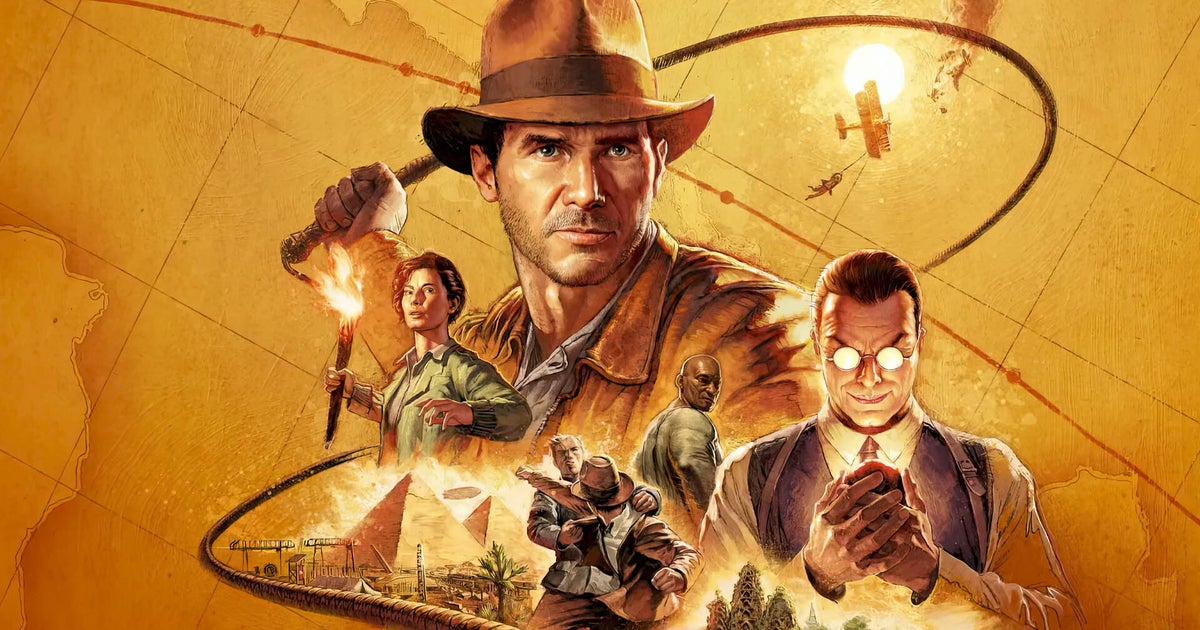Indiana Jones and the Great Circle marks the triumphant return of Machine Games. This is the studio’s biggest game to date and the first to deviate from the Wolfenstein series on which its reputation was built. It also gives us a first look at the latest technology developed in collaboration with id Software and Machine Games – and although it’s its own label, this new technology looks to right the many wrongs we’ve become accustomed to with many AAA releases. by Unreal Engine 5, including support for ray traced global lighting (RTGI), while aiming for 60 fps at high resolutions. Today we will discuss some of the great visual features on offer, both from a technological and artistic point of view, while discussing the essence of performance, image quality and the gameplay itself. Let’s go on the adventure.
With its release in the summer of ’81, Indiana Jones as a franchise grew up alongside video games as a medium. With Harrison Ford bringing this dashing character to life so successfully, Indy’s success would spawn numerous offshoots and adjacent products, including video games – the first of which arrived on the Atari 2600 just a year after the film’s release. As confusing as it may be, it would be one of many video games that would attempt to recreate iconic moments from the very first film.
Which brings us to modern times. The Great Circle is an original story, but it starts in a familiar way. The introduction to Raiders has been meticulously recreated for this new game, and it feels like a statement of intent – as if the designers at Machine Games studied this sequence frame by frame to fully understand the way Steven Spielberg told the story. By duplicating it, the team has come to grips with the best way to tell a story in this world. It also allows us to directly compare the game to the film, which in turn reveals some of the game’s visual victories.
First and foremost, unlike previous Machine Games titles, all cutscenes in this game are rendered in real time, which is a positive step. This also shows that character models are largely excellent, better than I expected before launch. There’s a surprising amount of detail visible and while there’s a bit of an uncanny valley element to these scenes, I feel like the team has captured the look of the actors for the most part. Alfred Molina’s portrayal of Satipo during this sequence feels surprisingly authentic, with his exaggerated facial expressions and sustained level of bewilderment as Indy goes about his business. The animation, expressions and reproduction of iconic camera angles are all beautifully developed during the game’s introduction.
But before we go any further, I want to highlight one issue: you’ll notice stuttering and the occasional drop to 30fps. There are large frametime deviations, but that’s only half the answer: certain animations also drop to 30fps for a short time even though the surrounding scene is updating at 60fps. The problem here is that it detracts a bit from the otherwise great cutscenes, and I hope they can fix that.
Speaking of camerawork, The Great Circle offers users two aspect ratio options: a full 16:9 option, the standard option, and an ultra-wide cinematic option. Using the cinematic option gives you a wider aspect ratio that better suits the film; the 16:9 option crops the left and right sides of each shot.
Manage cookie settings
I also wanted to highlight the quality of the voice work – Troy Baker takes on the role of Indiana Jones and when I listened to them side by side I was somewhat floored by how much it resembles the young Harrison Ford. It’s not just Indy, of course. The entire cast is brilliant and, as with previous Machine Games titles, original languages are often present. Sections set in a European city feature the language of that area, while the villain speaks German and has accented English – and his performance is nothing short of striking.
As the game cuts to an interior shot in a temple, the film’s reproduction remains impressive, from the expressions Indy and Satipo share to the hair rendering of Indy’s hapless competitor. It’s clear that Machine Games has taken great care to render hair strands in a clean and realistic manner, bringing their characters to life. This doesn’t appear to be a strand type hair system, they are still traditional hair charts, but the results are still excellent.
The game’s RTGI also impresses, using ray tracing to calculate indirect lighting from light sources such as the sun. Interior spaces with outdoor views best demonstrate the technique’s strengths, with natural light, contact shadows and shaded crevices. It’s a definite jump from previous games based on id Tech, and I think it’s crucial for a game like this that takes place in so many natural locations. You want natural lighting to really bring every scene to life.
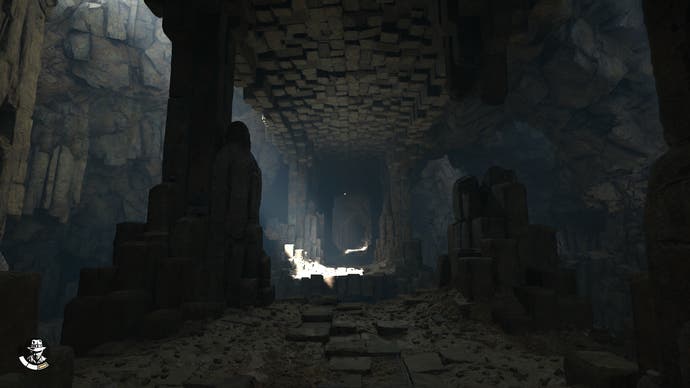
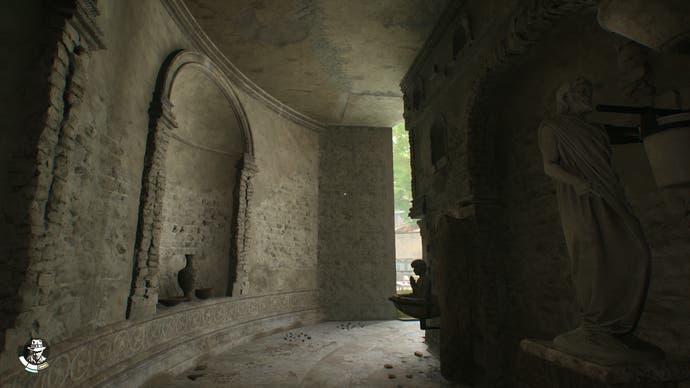
Despite the cost of RTGI, The Great Circle still aims for 60fps – an impressive feat, especially considering the high average resolution. On Xbox Series X, the game’s internal resolution averages around 1800p, with dynamic resolution scaling in use and clean overall image quality. It’s a huge leap from the string of UE5 titles we’ve seen at sub-1080p resolution when RT is enabled at 60fps.
Xbox Series S is an even more challenging platform, and one where we’ve seen RT features disappear in many releases. Here, however, RTGI is a requirement, so Machine Games had to take a different approach to ensure a good visual result. The internal resolutions are still relatively high, around 1080p, but the game relies on variable speed shading (VRS), like Doom Eternal did on Xbox. This technique attempts to reduce quality in areas that are not of visual interest, which helps performance but can sometimes manifest as video encoding artifacts. The problem isn’t serious on the Series .
The game’s asset quality has also been reduced, with lower resolution textures contributing to an install size of 87GB versus 130GB on the Series opens to light leaks and other artifacts or changes. But while it’s clear that the visuals are a hit on Series S, I’d say they’ve done a better job than usual at creating a version of the game that still plays well and looks good enough.
.png?width=690&quality=75&format=jpg&auto=webp)
.png?width=690&quality=75&format=jpg&auto=webp)
In addition to the more linear opening, most of the game takes place on huge, open-ended maps. This isn’t an open world game by any means, but the levels are still larger than what we’ve seen from Machine Games in the past – something like a large Hitman map, with realistically spaced points of interest.
Fortunately, the frame rate is virtually unwavering at 60fps during actual gameplay on both Series The loading times are also astonishingly fast: there is virtually no visible loading time in the game, making it feel completely seamless. The only minor performance issue is the aforementioned cutscenes, meaning the game is otherwise perfect on console.
Other than that, I think this is one of the best licensed games I’ve ever played. It’s rare for a developer to understand the source material they’re building a game on so perfectly, but it feels like the people behind Indy truly love and respect the property. The stories are, honestly, significantly better than the last two films, and they’re also much more grounded. There are supernatural elements, but it largely remains within the realm of something like Raiders.
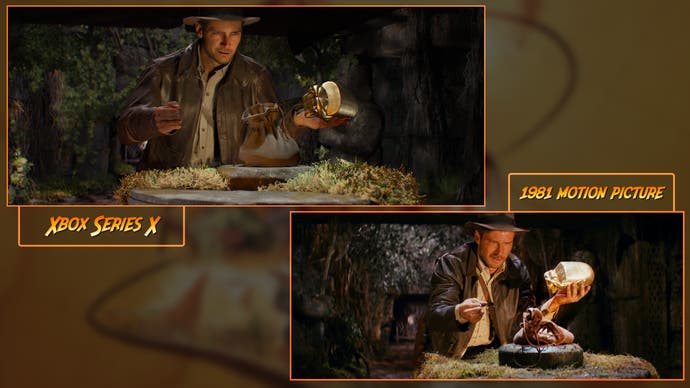
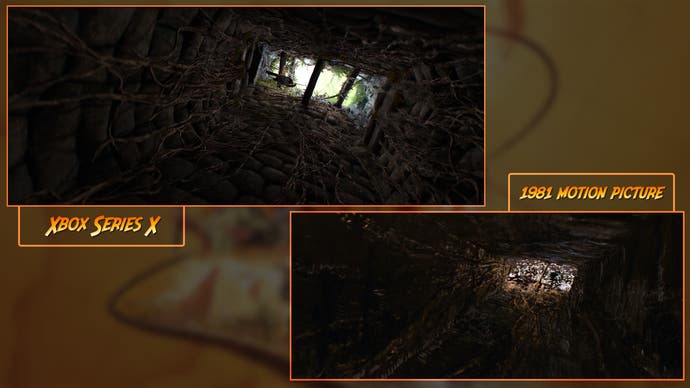
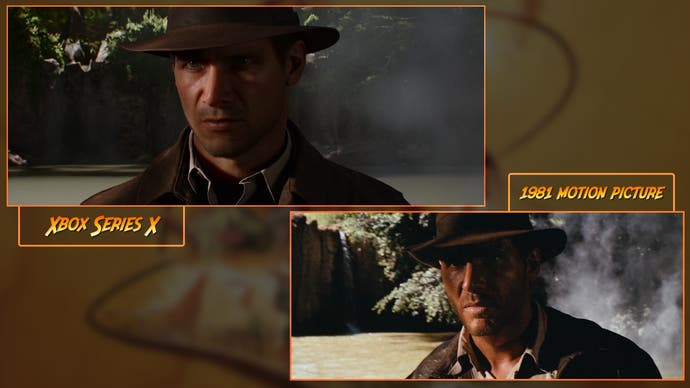
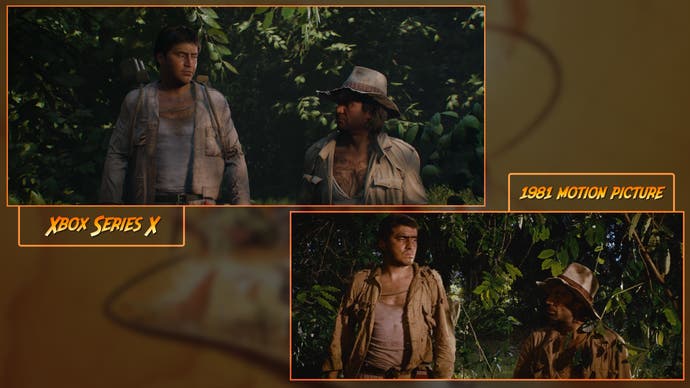
The basic structure of the game makes this work. Essentially, you spend time in various locations around the world, dealing with a mix of puzzle solving, dialogue, exploration, stealth and combat. The way the game transitions smoothly between linear scripted sequences and wide-open gameplay really gives it room to breathe. There are even fun side missions, like one where you steal a black shirt to gain access to an underground boxing arena. It’s a game that shares a lot of DNA with the first Riddick title, Escape from Butcher Bay, which some of the Machine Games staff had previously worked on.
Things like the stealth system are also very interesting once you get into it. Basically, Indy can’t discreetly take out enemies with just his hands – that causes a fistfight. Instead, players will have to use objects scattered around the environment for a quick and stealthy knockout. Enemies respond realistically to Indy’s attacks and the stealth AI works as you’d expect – even if it’s a bit ‘gamey’, with enemies happy to go about their business even as their ranks are dramatically thinned. Still, it’s all about rewarding experimentation, allowing players to poke around while taking out enemies along the way. Weapons are also rarely used, especially early on, but they are always an option if you can handle the consequences. For example, fire a few bullets at an enemy base and you warn everyone.
The biggest thing for me here is that after spending so much time with the game, it really dawned on me how much I wish such a game would exist in the first place. Indiana Jones and the Fate of Atlantis is one of the first video games I ever bought with my own money and I have cherished it. I enjoy other Indy games too, but The Great Circle honestly tops them all; it really channels the spirit of Indiana Jones into game form and it’s definitely worth your time.

